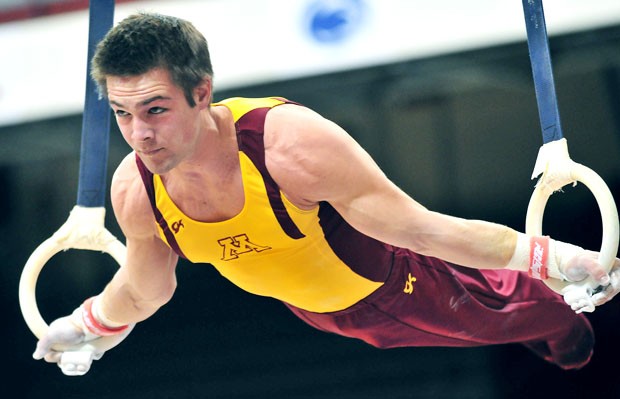Head coach of Gophers menâÄôs gymnastics Mike Burns , who is in his fifth year at Minnesota , has been involved in college gymnastics since 1976. In 1981, he began his coaching career. Since his early years, Burns has seen just about everything there is to see in the world of college gymnastics, and itâÄôs only been rewarding. He has coached NCAA champions, Big-Ten champions, and numerous All-Americans. However, Burns has also been keenly aware of a trend thatâÄôs only worsened in his 33 years of coaching. âÄúAll IâÄôve seen is programs being dropped. ItâÄôs been frustrating and tough to take,âÄù Burns said. As President of the College Gymnastics Association, Burns recently joined a summit of representatives from the best in college gymnastics at the USA Gymnastics headquarters in Indianapolis. At the summit, Burns, along with the president of the womenâÄôs branch of the CGA, presented, among other problems, the rapid demise of collegiate gymnastics around the country. It isnâÄôt just a recent trend, either. College programs have been fading since the late 1970s, including extremely successful teams like Oregon, Colorado, and LSU. Half of the 1984 Olympic team consisted of UCLA gymnasts. Nine years later, the program (along with swimming) was disbanded. The trend has only continued, and with todayâÄôs economic situation, worsened. Only 18 NCAA menâÄôs gymnastics teams remain. Universities not included in those 18 are often hesitant to help the situation by suddenly starting up a new program. It takes time, money and many other factors. Prior to the meeting, Burns surveyed college gymnastics coaches for their input on the issue. Some strongly believed in quickly starting new programs, such as Texas, a state that breeds some of the best gymnasts in the country . âÄúI think if they would have started a Texas program, they probably would be challenging for the NCAA title in four or five years,âÄù Burns said. Others think strong club-level teams from the National Association of Intercollegiate Gymnastics Clubs are choice candidates. Minnesota hosted two of the top club teams in the country, Washington and Arizona State, just weeks ago. But some teams, like the Sun Devils, just donâÄôt have the resources, so Burns, with other summit members, didnâÄôt set goals out of reach. âÄúItâÄôd be great if there was a way that we could stop that tide, turn it around, and see if we could add something,âÄù Burns said. And by adding something, the Gophers coach doesnâÄôt think he is asking for a lot. âÄú[At the end it was] how can we get one program. ThatâÄôs kind of the slogan that came out of it: just get one,âÄù Burns said. Back to the early âÄô80s again. Around this time, Burns can remember attending a valuable USA Gymnastics conference. He also took away a valuable lesson from a USAG representative one day. The man asked: âÄúWhat did you do today to help sell your gymnastics program?âÄù âÄúThat just stuck with me for many, many years,âÄù Burns said. Today, Burns is constantly trying to think about how to market his successful program better, even borrowing a few ideas from Minnesota basketball and football events on occasion . To keep his program alive, Burns has gone beyond the limits of coaching. âÄúYou can be a part of the whole program, even a part of the whole university,âÄù Burns said. To keep gymnastics strong, Burns also encourages this philosophy among other coaches. âÄúEvery coach in every program thatâÄôs out there needs to be extremely aware of their surroundings in terms of âÄòhow can I make my program safer,âÄô âÄù Burns said.

Image by Chris Roberts
Burns hoping to turn the tide in men’s collegiate gymnastics
Published February 16, 2009
0

